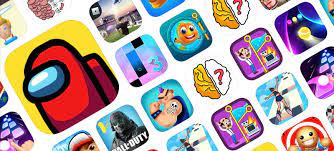Mastering the Art of Strategic Management in the Modern Workplace
The Art of Effective Management
Management is a crucial aspect of any organisation, encompassing the coordination of resources, people, and processes to achieve specific goals. Effective management is not just about giving orders; it requires a combination of leadership, communication, decision-making, and problem-solving skills.
Key Elements of Management
Successful management involves several key elements:
- Leadership: A good manager inspires and motivates their team towards a common goal.
- Communication: Clear and open communication is essential for effective management.
- Decision-Making: Managers must make informed decisions quickly and efficiently.
- Problem-Solving: Addressing challenges and finding solutions is a fundamental aspect of management.
- Planning and Organising: Managers need to set objectives, create plans, and organise resources effectively.
The Role of a Manager
A manager plays a pivotal role in an organisation by overseeing operations, guiding employees, and ensuring that objectives are met. They are responsible for setting goals, delegating tasks, providing feedback, and resolving conflicts. A successful manager fosters a positive work environment that encourages productivity and growth.
Tips for Effective Management
To excel in management roles, consider the following tips:
- Lead by Example: Demonstrate the behaviour you expect from your team members.
- Listen Actively: Pay attention to your employees’ concerns and feedback.
- Empower Your Team: Delegate tasks appropriately and empower team members to make decisions.
- Celebrate Successes: Acknowledge achievements and milestones to boost morale.
- Continuously Learn: Stay updated on industry trends and management best practices to enhance your skills.
In Conclusion
In conclusion, effective management is essential for the success of any organisation. By mastering key skills such as leadership, communication, decision-making, problem-solving, planning, and organising, managers can lead their teams towards achieving common objectives. Embracing these principles can foster a positive work culture that promotes collaboration, innovation, and growth.
Eight Essential Management Strategies for Fostering a High-Performing Team
- Set clear goals and communicate them effectively to your team.
- Delegate tasks appropriately, taking into account each team member’s strengths and weaknesses.
- Provide regular feedback to your team members to help them improve and grow.
- Lead by example and demonstrate the behaviour you expect from your team.
- Encourage open communication and create a supportive work environment.
- Manage conflicts promptly and fairly to maintain a positive team dynamic.
- Invest in training and development opportunities for your team to enhance their skills.
- Celebrate achievements and recognise the hard work of your team members.
Set clear goals and communicate them effectively to your team.
Setting clear goals and effectively communicating them to your team is a fundamental aspect of successful management. When objectives are clearly defined and understood by all team members, it provides a sense of direction and purpose, aligning efforts towards a common target. Clear communication ensures that expectations are transparent, roles are defined, and progress can be monitored effectively. By setting clear goals and communicating them clearly, managers empower their team to work cohesively towards achieving shared objectives, fostering motivation, accountability, and ultimately driving success within the organisation.
Delegate tasks appropriately, taking into account each team member’s strengths and weaknesses.
Delegating tasks appropriately involves a strategic approach that considers the strengths and weaknesses of each team member. By understanding the unique capabilities of individuals within the team, a manager can assign tasks that align with their strengths, empowering them to excel in their roles. Recognising and accommodating for weaknesses can also help in providing support and guidance where needed, fostering a collaborative environment where team members can complement each other’s skills and work towards achieving collective goals efficiently. Effective delegation based on individual strengths and weaknesses not only enhances productivity but also cultivates a sense of trust and empowerment among team members.
Provide regular feedback to your team members to help them improve and grow.
Providing regular feedback to your team members is a fundamental aspect of effective management. Constructive feedback not only helps individuals understand their strengths and areas for improvement but also motivates them to grow and excel in their roles. By offering guidance, support, and encouragement through feedback, managers can foster a culture of continuous learning and development within the team. This proactive approach not only benefits individual team members but also contributes to the overall success and cohesion of the team as a whole.
Lead by example and demonstrate the behaviour you expect from your team.
Leading by example is a fundamental principle of effective management. By demonstrating the behaviour and work ethic that you expect from your team members, you set a standard of excellence that inspires others to follow suit. When managers lead by example, they establish credibility and trust with their team, fostering a culture of accountability and mutual respect. This approach not only motivates employees to perform at their best but also creates a positive work environment where everyone is aligned towards achieving common goals.
Encourage open communication and create a supportive work environment.
Encouraging open communication and fostering a supportive work environment are essential aspects of effective management. By creating a culture where team members feel comfortable expressing their ideas, concerns, and feedback, managers can build trust and collaboration within the workplace. Open communication allows for better problem-solving, enhances teamwork, and boosts employee morale. A supportive work environment promotes creativity, productivity, and overall job satisfaction, leading to a more engaged and motivated team. Managers who prioritise open communication and supportiveness can cultivate a positive work culture that benefits both the employees and the organisation as a whole.
Manage conflicts promptly and fairly to maintain a positive team dynamic.
Managing conflicts promptly and fairly is a crucial aspect of effective management. Addressing conflicts in a timely manner helps prevent escalation and fosters a positive team dynamic. By handling disagreements fairly and impartially, managers can maintain trust among team members and promote a healthy work environment. Resolving conflicts promptly not only prevents issues from lingering but also demonstrates strong leadership and communication skills, ultimately contributing to a more cohesive and productive team.
Invest in training and development opportunities for your team to enhance their skills.
Investing in training and development opportunities for your team is a crucial aspect of effective management. By providing employees with the chance to enhance their skills, you not only empower them to perform their roles more effectively but also demonstrate your commitment to their professional growth. Training sessions can help team members stay abreast of industry trends, learn new technologies, and improve their problem-solving abilities. Ultimately, a well-trained and skilled team is better equipped to tackle challenges, drive innovation, and contribute to the overall success of the organisation.
Celebrate achievements and recognise the hard work of your team members.
Recognising the hard work and celebrating the achievements of team members is a fundamental aspect of effective management. By acknowledging the efforts and successes of individuals within a team, managers not only boost morale but also foster a sense of appreciation and motivation among employees. Celebrating achievements creates a positive work culture where employees feel valued and encouraged to continue striving for excellence. This practice not only enhances team cohesion but also reinforces a sense of accomplishment and pride in the collective efforts towards reaching organisational goals.












